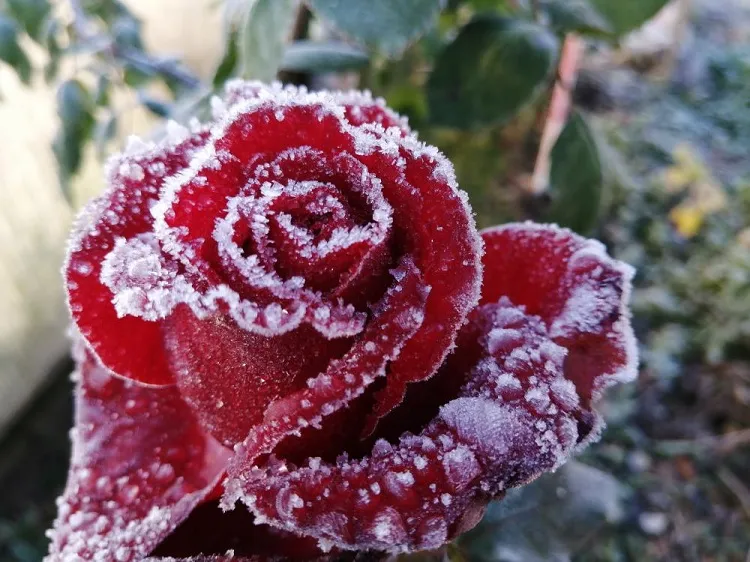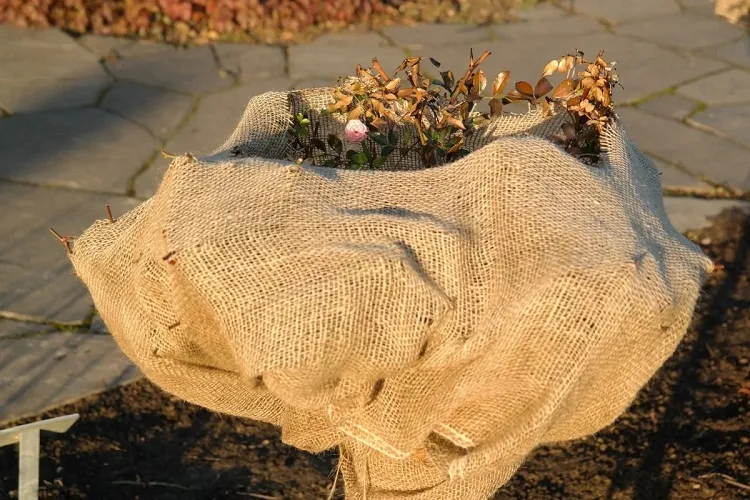The queen of flowers, the rose, is often the pride of a gardener’s collection, with its delicate blossoms and exciting aroma, bringing magnificence and sophistication to your garden. But while winter approaches and temperatures drop, your flowering bushes become vulnerable to the cold. Do you wonder how to prepare rose bushes for winter, protecting these handsome flowers during the chilly season?
Why are Roses so Hard to Keep Alive?
Roses have a reputation for being difficult to be grown and demanding, so they need a special attention. One important part of the knowledge for their care, is to be aware of the reliable approach how to prepare these bushes for winter. The difficulty arises due to specific care requirements they have:
Firstly, these tender flowers are susceptible to pests and diseases. They can be a magnet for a range of pests like aphids, and diseases like blackspot and rust. So, prevent these problems by regularly checking and treating the affected plants’ parts. Then comes their pH sensitivity towards soil, because they can develop good mostly on well-draining soil with a pH of 6.5 to 7.0. They do not like overly acidic or alkaline root environment. Watering them is a must, as they require being constantly moist, though you should be careful not to waterlog the shrubs. It’s not easy to strike the right balance. Because of these particular care tips, these plants may look challenging, but with the proper approach, they can be extremely rewarding.
How to Prepare Rose Bushes for Winter?
You probably want to ensure the queen of flowers to bloom beautifully next year. As the blooming season is already gone, your first care and query in autumn is how to prepare rose bushes for winter. There are some important things to do to reach this:
- Stop nourishing them: Just before the beginning of autumn, cease fertilizing your flowering bushes. This measure will suppress possible new growth, which could be destroyed by early frosts.
- Deep watering: Prior to the first severe freeze, water your flowering bushes deeply. This makes the soil to retain moisture, which is helpful for the roots.
- Selective trimming: Cut off any dead or diseased wood, but postpone major pruning for spring. Cutting back tall branches is beneficial, not to allow them to break under heavy snow.
- Abundant mulching: Add a thick layer of mulch, 6-8 in (15-20 cm) around the stem of the bush after the first hard freeze, insulating in this way the roots and the stem. Straw, leaves, or compost are suitable stuffs for your protecting layer.
- Protection against cold: In particularly cold regions, consider applying more stable isolation like a rose cone or making a soil mound around the base of the plant. But you should be cautious, when the spring come to remove the mound or cone!
Read also: How to Prune Bush Roses – Take Care of the Queen of Flowers
And: How to Trim Rose Bushes in Summer? Let Them Birst in Flowers Troughout the Season!
Is There a Way to Revive Frozen Roses?
Even with the described preparation, winter can be hard to survive for your roses, and you might find some of the bushes have suffered frost damage. How to help them:
Be patient and wait until the last frost prior to assess the damage. Some parts might appear dead but could be bounced back. Then trim the damaged branches, cutting off blackened or clearly dead ones, boosting new growth. Be sure the bushes get ample water, and by the first days of spring start your regular fertilizing regime to ensure them with a nutrient boost.
Consider further protection in case your flowering bush was heavily affected, changing its location. If it’s exposed to wind and frost, move it to a low-lying and more warm area. Think about offering it a maximum protection in the coming winter.
How to Prepare a Climbing Rose Bush for Winter?
Climbing roses, having long canes, need a somewhat different winter care routine:
- Scarcely pruning: Remove only dead or diseased wood in the fall, as extensive trimming for forming shape should be done in the spring.
- Supporting canes: Wind can whip and broke down long canes, so support them with a trellis or fence to not allow them to be torn or broken.
- Thick mulching: Just like with bush roses, add a thick layer of mulch at their base. This saves the roots from low temperatures.
- Wrapped canes: In northern cold zones, practice to wrap the canes with burlap or another breathable material. Start from the bottom and work your way up, then secure with twine.
- Ground-layering your rose: This is a fine trick where you pin a healthy cane to the ground in the fall, burying part of it.
Read also: How to Care for Roses in September: Top 6 Foolproof Tips for Success





